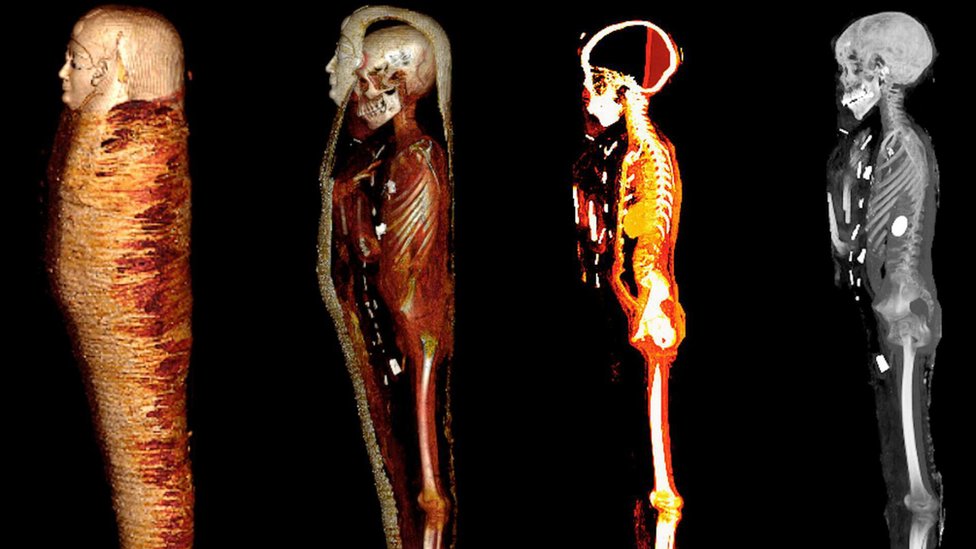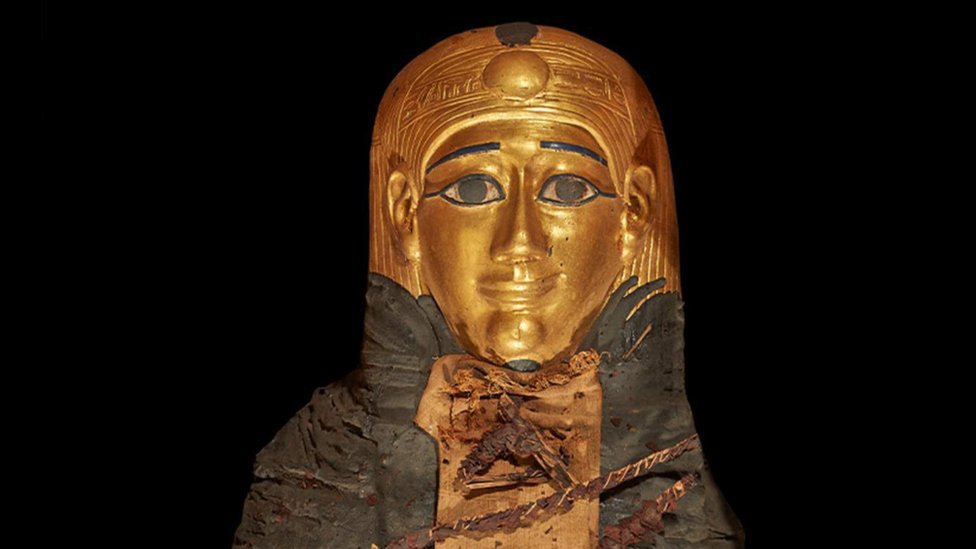The mummy was buried with a “heart of gold” 2,300 years ago in Egypt
3 min read

BBC General
Posted on 1/26/2023 7:33 PM / Updated on 1/26/2023 7:34 PM

Researchers in Egypt have discovered a heart of gold and many other treasures in a boy who was mummified 2,300 years ago.
The body of the young man, whose death was estimated to be between 14 and 15 years old, was found in 1916. However, the remains were stored for more than a century along with dozens of others in the deposits of the Egyptian Museum in Cairo, without being closely examined by experts.
That changed when a team led by Sahar Selim of Cairo University decided to examine the mummy using a CT scanner.
The images obtained revealed that the body had 49 amulets of 21 different types, many of which were made of gold. Therefore, the mummy was christened as the “golden boy,” Slim announced in an article published in the journal Frontiers in Medicine.
The discovery earned the mummy a room in the Egyptian Museum, where it will be displayed.
hidden treasure
The tests made it possible to determine that the young man belonged to the upper class, since “his bones and teeth were sound, and he did not show signs of malnutrition or disease.”
His remains underwent a “high-quality embalming process, which included removal of the brain and entrails.”

The pictures showed that under the shrouds that covered the body of the young man, there was a body next to the penis, a golden tongue inside the mouth, and a heart-shaped body made of gold also below the chest cavity.
Selim noted that the ancient Egyptians placed amulets on the bodies of their dead in order to “protect and give vitality” to them in the afterlife.
“The golden tongue inside the mouth sought to ensure that the deceased would speak in the afterlife,” the expert explained.
The pictures also showed that the young man’s body was dressed in sandals and decorated with wreaths of ferns.
The mummy – which is believed to date back to the late Ptolemaic period (about 30-332 BC) – was found in Edfu, in southern Egypt, in 1916. Six years earlier, an expedition led by British Howard Carter found the tomb of Tutankhamun in Egypt. Valley of the Kings.
The boy’s remains were protected by two coffins. On the outside there was an inscription in Greek. The interior is made of wood. The corpse had a golden mask on its head.
Search without destroying
Selim believes his discovery is just the beginning of more to come.

“Egypt underwent extensive excavations in the 19th and early 20th centuries that resulted in the discovery of thousands of preserved ancient bodies, many of them still wrapped up and inside their coffins,” she says.
“Since its opening in 1835, the Egyptian Museum in Cairo has served as a repository for these finds, and the basement is filled with many of these mummies that have been held for decades without being studied or displayed.”
In the past, bandages were removed from mummies and cadavers subjected to invasive dissection for research and entertainment purposes, the researcher says.
But now, tomography could be a great tool to search for many of these remains without damaging them, something that will allow us to delve deeper into the health, beliefs, and abilities of humans in ancient times.
“Tomography represents a major advance in the field of radiology. Instead of using a single image, hundreds of thin projections (sections) of the body can be combined to create a complete three-dimensional model,” the specialist concluded.
– This text was published in https://www.bbc.com/portuguese/geral-64410536


“Devoted food specialist. General alcohol fanatic. Amateur explorer. Infuriatingly humble social media scholar. Analyst.”




